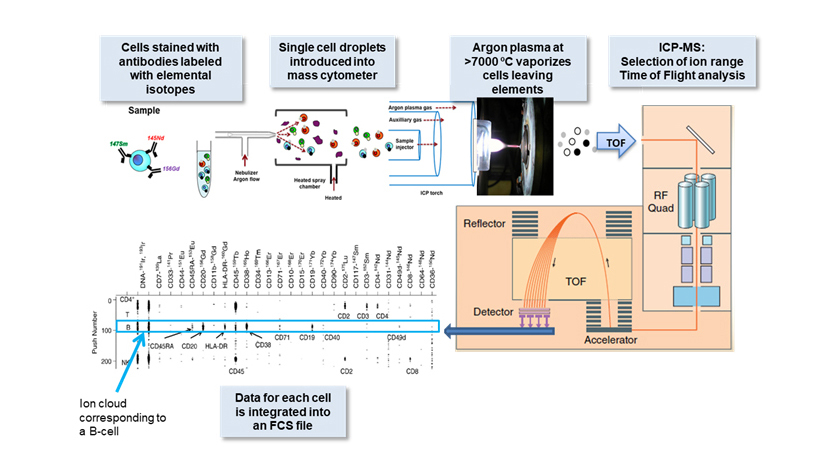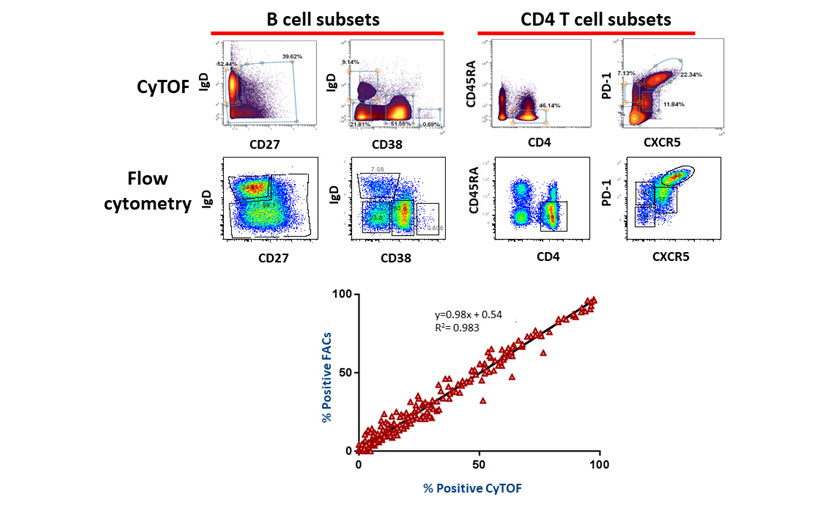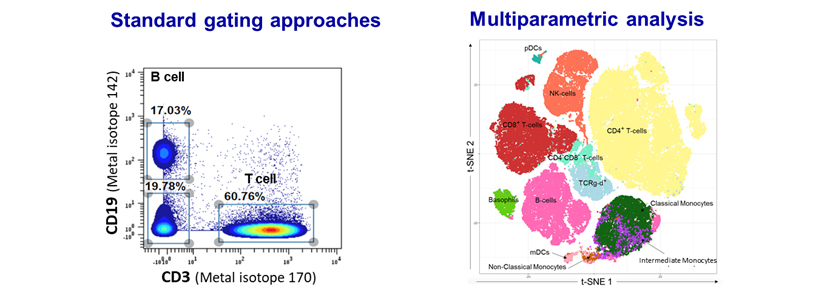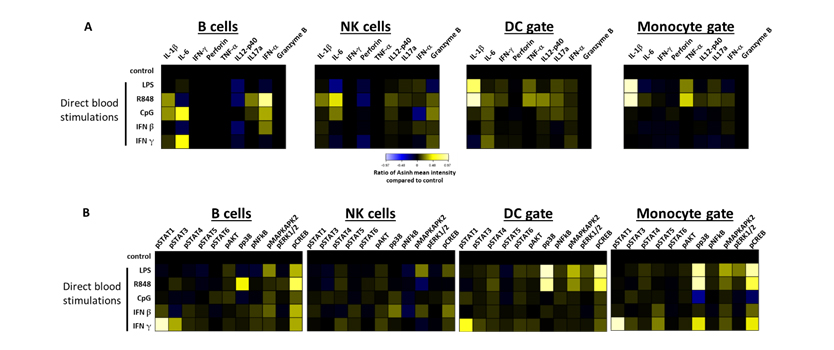Mass cytometry (CyTOF)

Mass cytometry uses many of the same principles as flow cytometry. However, instead of antibodies coupled to fluorochromes, the antibodies used for this technique are coupled to rare metal isotopes. Cells labeled with these antibodies are sprayed into droplets that are introduced into an inductively coupled plasma mass spectrometer (ICP-MS) where each cell is vaporized in an argon plasma at >7000 °C. The ion cloud for an individual cell then undergoes time of flight (TOF) elemental analysis with cell associated concentrations of each unique metals integrated into an FCS file (Figure 1).

The main advantages of mass cytometry are:
- The availability of a large number of metal isotopes that can be used to label different antibodies targeting various immune cell related markers
- Absence of mass overlap between the elementary isotopes such that compensations are not needed as in flow cytometry
- Low background signal since the metal isotopes used are not detectable in biological samples
- In contrast with fluorophores that can have vastly different signal intensities, the CyTOF instrument has a similarly high sensitivities for all metal isotopes analyzed
- Amenable to multiplexing of > 20 different cell samples that can be stained and analyzed in parallel with the same antibody panel
These features allow for the measurement of more than 50 parameters simultaneously without the need to compensate between different metal-coupled antibodies. Cell staining with these CyTOF antibodies show excellent correlations in cross validation studies performed with fluorescently labeled antibodies analyzed by flow cytometry (Figure 2).

Analysis of blood samples by mass cytometry allows simultaneous phenotypic characterization of almost all immune cell populations. The diagnostic laboratory uses these profiles to identify abnormalities in a patient's immune cell populations relative to the norms of healthy individuals. These analysis can be performed by standard gating approaches and also using software packages for unsupervised analysis such as t-SNE that automatically separates cells into populations based on their phenotypic characteristics (Figure 3). In addition to phenotypic characterization, mass cytometry panels are used to evaluation functional activity of adaptive and innate immune cell populations by monitoring intracellular levels of up to nine different cytokines or cytotoxic proteins (Figure 4A). In a likewise fashion, mass cytometry can also be used to evaluate immune related signaling events by monitoring phosphorylation levels of up to eleven different signaling proteins (Figure 4B).





